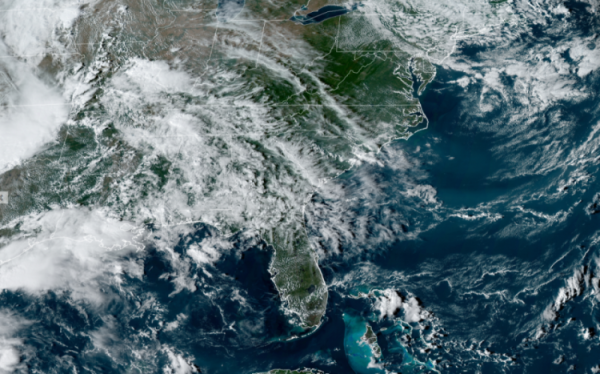SolarAnywhere® irradiance data is generated using imagery from geostationary orbiting satellites. The SolarAnywhere model uses algorithms developed by Dr. Richard Perez and his team at SUNY Albany to convert satellite imagery into global horizontal irradiance (GHI) and direct normal irradiance (DNI) measurements in resolutions as high as 1 km (0.01 x 0.01 degrees). Diffuse horizontal irradiance (DIF or DHI) is calculated using the following geometric relationship based on the solar zenith angle:
GHI=DHI+DNI*cos (α_{zenith} )
The first step in calculating GHI is to calculate clear sky GHI. Clear sky GHI is the calculation of GHI before cloud cover is taken into consideration and is based on the following variables: ozone, water vapor, aerosol optical depth (AOD), elevation above sea level and temperature.
Next, clear sky DNI is calculated using clear sky GHI as an input to the DirIndex model. The DirIndex model is a second iteration of Dr. Perez’s DirInt model which is based on the DISC model first developed by NREL. The key difference between the DirIndex model and DirInt model is that the DirIndex model better accounts for atmospheric turbidity, which has more influence on DNI than on GHI. The validation of the DirIndex model can be seen in this paper.
Finally, SolarAnywhere GHI and DNI data are generated by adjusting clear sky values to account for cloud conditions. Cloud conditions are determined using the visible and infrared channels from a global network of geosynchronous orbiting satellites.
Infrared images (IR) were first introduced into the model for SolarAnywhere version 3.0. Visible and infrared images are captured by the same geostationary satellite networks, but infrared images are captured at infrared (3.8 – 13.3 microns) wavelengths.
Under previous models, only visible wavelength light images were used to determine cloud location; however, regions with heavy snow cover often confounded the model by detecting snow rather than cloud cover. The use of IR image channels allows SolarAnywhere to differentiate between snow and clouds, which improves model accuracy where snow cover exists. Cloud conditions are summarized in a value called the cloudiness index, which is converted to a clearness index (Kt) that is then applied to calculated clear sky irradiance.
Process for Generating SolarAnywhere® Data from Satellite Images
The Satellites
Follow this link to see the satellite used for each data region.
